Takatsugu Hirayama
MVA2023 Small Object Detection Challenge for Spotting Birds: Dataset, Methods, and Results
Jul 18, 2023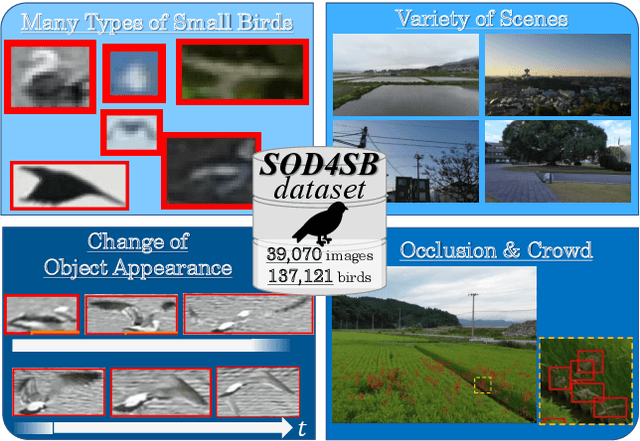

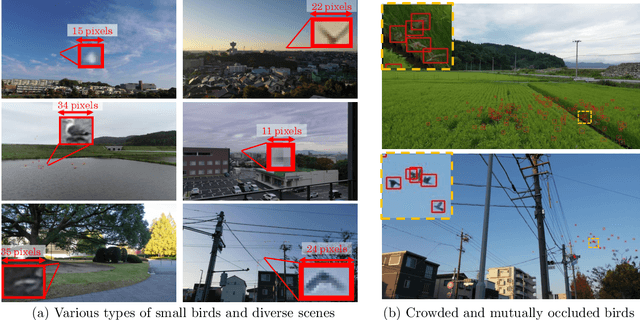
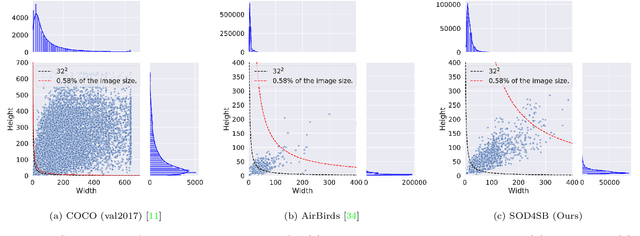
Abstract:Small Object Detection (SOD) is an important machine vision topic because (i) a variety of real-world applications require object detection for distant objects and (ii) SOD is a challenging task due to the noisy, blurred, and less-informative image appearances of small objects. This paper proposes a new SOD dataset consisting of 39,070 images including 137,121 bird instances, which is called the Small Object Detection for Spotting Birds (SOD4SB) dataset. The detail of the challenge with the SOD4SB dataset is introduced in this paper. In total, 223 participants joined this challenge. This paper briefly introduces the award-winning methods. The dataset, the baseline code, and the website for evaluation on the public testset are publicly available.
IPA-CLIP: Integrating Phonetic Priors into Vision and Language Pretraining
Mar 06, 2023Abstract:Recently, large-scale Vision and Language (V\&L) pretraining has become the standard backbone of many multimedia systems. While it has shown remarkable performance even in unseen situations, it often performs in ways not intuitive to humans. Particularly, they usually do not consider the pronunciation of the input, which humans would utilize to understand language, especially when it comes to unknown words. Thus, this paper inserts phonetic prior into Contrastive Language-Image Pretraining (CLIP), one of the V\&L pretrained models, to make it consider the pronunciation similarity among its pronunciation inputs. To achieve this, we first propose a phoneme embedding that utilizes the phoneme relationships provided by the International Phonetic Alphabet (IPA) chart as a phonetic prior. Next, by distilling the frozen CLIP text encoder, we train a pronunciation encoder employing the IPA-based embedding. The proposed model named IPA-CLIP comprises this pronunciation encoder and the original CLIP encoders (image and text). Quantitative evaluation reveals that the phoneme distribution on the embedding space represents phonetic relationships more accurately when using the proposed phoneme embedding. Furthermore, in some multimodal retrieval tasks, we confirm that the proposed pronunciation encoder enhances the performance of the text encoder and that the pronunciation encoder handles nonsense words in a more phonetic manner than the text encoder. Finally, qualitative evaluation verifies the correlation between the pronunciation encoder and human perception regarding pronunciation similarity.
Interaction Detection Between Vehicles and Vulnerable Road Users: A Deep Generative Approach with Attention
May 09, 2021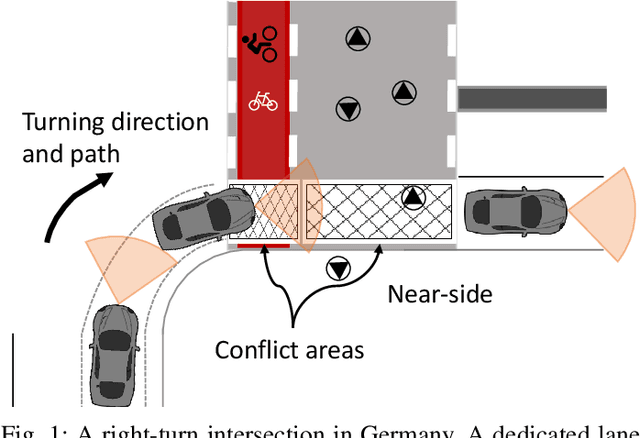
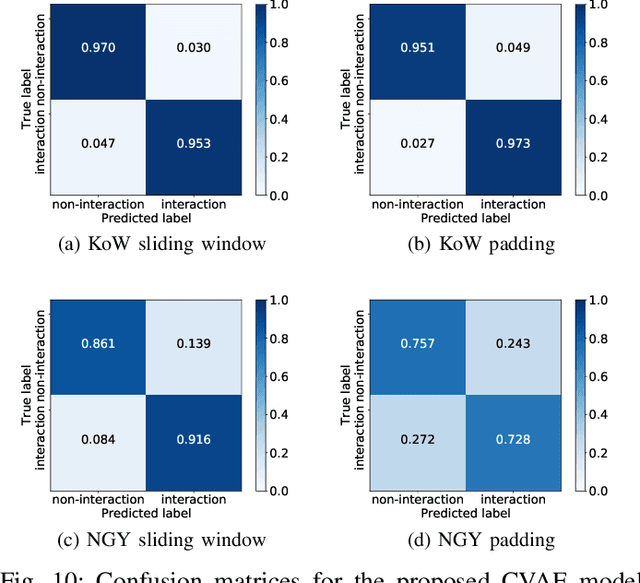
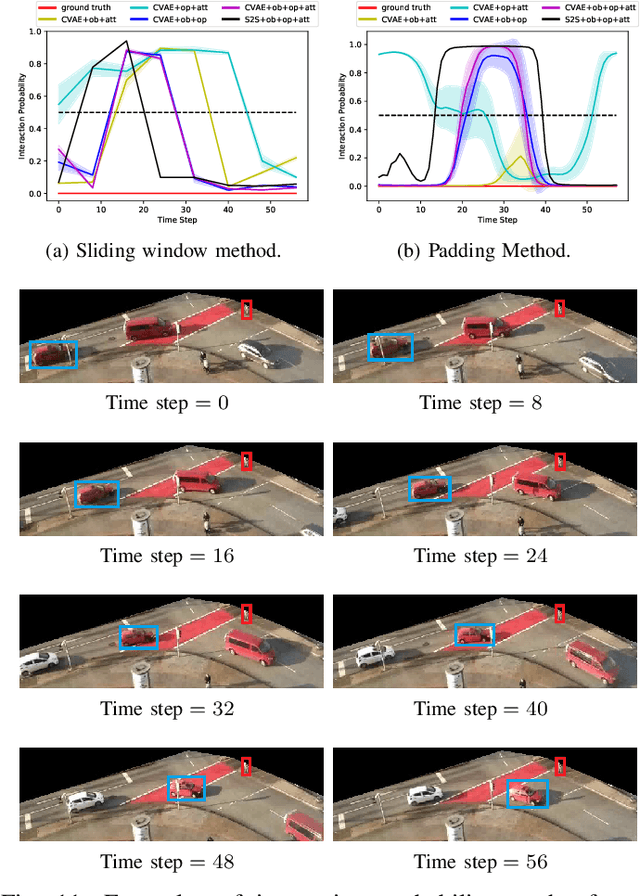
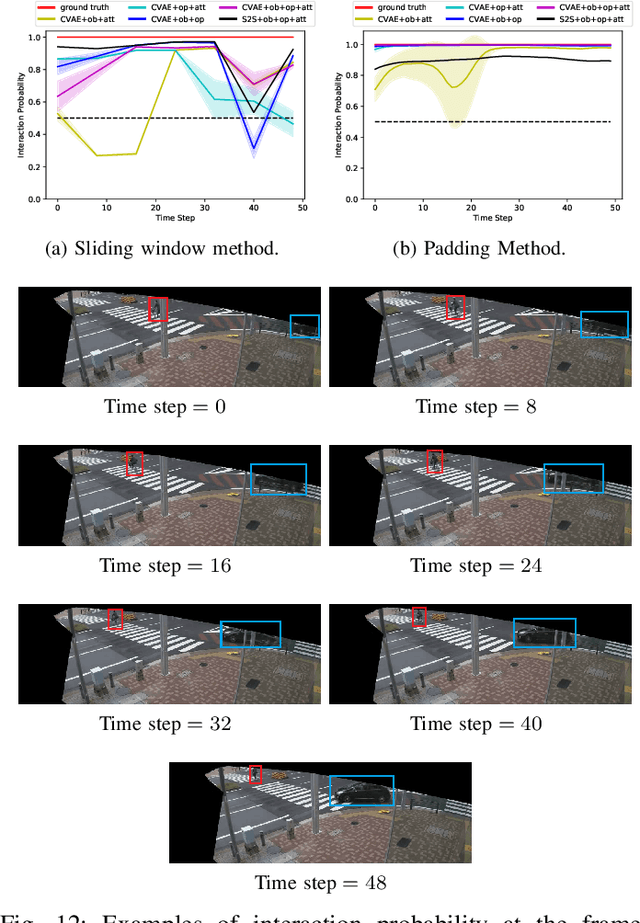
Abstract:Intersections where vehicles are permitted to turn and interact with vulnerable road users (VRUs) like pedestrians and cyclists are among some of the most challenging locations for automated and accurate recognition of road users' behavior. In this paper, we propose a deep conditional generative model for interaction detection at such locations. It aims to automatically analyze massive video data about the continuity of road users' behavior. This task is essential for many intelligent transportation systems such as traffic safety control and self-driving cars that depend on the understanding of road users' locomotion. A Conditional Variational Auto-Encoder based model with Gaussian latent variables is trained to encode road users' behavior and perform probabilistic and diverse predictions of interactions. The model takes as input the information of road users' type, position and motion automatically extracted by a deep learning object detector and optical flow from videos, and generates frame-wise probabilities that represent the dynamics of interactions between a turning vehicle and any VRUs involved. The model's efficacy was validated by testing on real--world datasets acquired from two different intersections. It achieved an F1-score above 0.96 at a right--turn intersection in Germany and 0.89 at a left--turn intersection in Japan, both with very busy traffic flows.
 Add to Chrome
Add to Chrome Add to Firefox
Add to Firefox Add to Edge
Add to Edge